Unlock the mysteries of the plastic fabrication process with our comprehensive guide. Explore 22 methods, from injection molding to rotational foam molding, understand how to choose the right process for your project, and discover how quality plastic parts fabrication can elevate your business. Dive in now.
21 Plastic Fabrication Processes and How to Choose the Right Process for Your Project

What is Plastic Fabrication?
Plastic fabrication is an umbrella term for various processes used to design, create, and assemble plastic parts and products. From everyday objects such as water bottles and food containers to specialized parts in aerospace and medical devices, plastic fabrication plays a crucial role in multiple industries.
At its core, plastic fabrication is the transformation of raw plastic materials into a final product. It involves numerous manufacturing processes for plastics, depending on the design requirements, project complexity, and plastic type used. Whether it’s creating a simple plastic component or fabricating a complex multi-part assembly, each step of the fabrication process is critical in achieving the desired result.
A skilled plastic fabricator can use a range of methods to form plastic parts, ensuring they meet exact specifications. Their work encompasses everything from designing the product and preparing the raw materials to carrying out the fabrication method and finishing the product. In a world increasingly reliant on plastic components, a plastic fabrication company is an invaluable partner in turning your product idea into reality.
In the following sections, we’ll dive deeper into the various types of plastic fabrication methods, highlighting the unique features and advantages of each. With this information, you’ll be well-equipped to make informed decisions about the best process for your specific project.
22 Plastic Fabrication Processes
Injection Molding

Injection molding is a popular method for manufacturing plastic parts. It involves heating thermoplastic material to a liquid state and injecting it into a mold under high pressure. Once the plastic cools and hardens, the mold opens to release the part.
This process is excellent for producing large quantities of identical plastic parts with high precision and consistency. However, it requires a considerable initial investment for the production of molds.
Blow Molding

Blow molding is similar to injection molding but uses air pressure to form hollow plastic parts like bottles and containers. A heated plastic tube is inflated into a mold and cooled to create the final shape. This process is ideal for large-scale production but may not be suitable for complex designs or thick-walled items.
Rotational Molding
Rotational molding, or rotomolding, is another process used for creating hollow plastic products. A plastic powder is placed inside a mold, which is then heated and rotated, causing the plastic to evenly coat the interior. This method is excellent for producing large, hollow items like tanks or playground equipment, offering design flexibility and uniform wall thickness.
Vacuum Forming
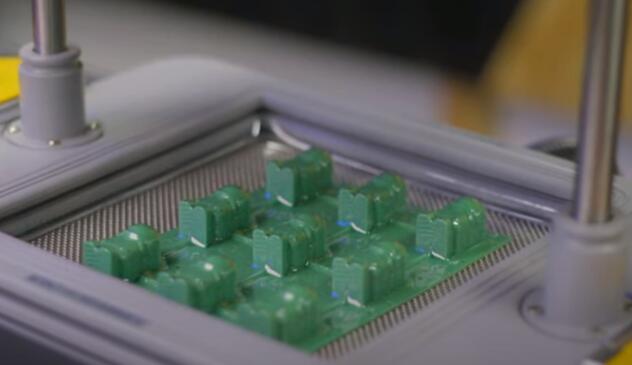
Vacuum forming, also known as thermoforming, is a cost-effective plastic fabrication method ideal for producing large, shallow, or moderately deep parts. This process is widely used in the creation of packaging, vehicle door and dash panels, trays, refrigerator liners, and much more.
Here’s a detailed step-by-step overview of the vacuum forming process:
Heating the Plastic Sheet: The process starts with a flat thermoplastic sheet. This sheet is heated until it becomes pliable. The heating needs to be controlled carefully to achieve an even temperature throughout the sheet, which ensures a uniform thickness of the finished part.
Mold Preparation: While the sheet is being heated, the mold, typically made from wood, aluminum, or resin, is prepared. The mold’s design and complexity depend on the final product’s specifications.
Forming the Shape: Once the plastic sheet is adequately heated, it’s swiftly transferred onto the mold. A vacuum is then applied, sucking the air out from between the sheet and the mold. This action forces the plastic sheet to conform to the mold’s shape.
Cooling and Release: The formed plastic is allowed to cool and solidify. Once cooled, the vacuum is released, and the part is removed from the mold.
Trimming and Finishing: Finally, the formed part is trimmed to remove excess material and finished as per the product requirements. This might involve drilling holes, adding fixtures, or polishing surfaces.
One of the significant advantages of vacuum forming is its lower tooling costs compared to other methods like injection molding, making it an excellent choice for short-run or prototype production. Additionally, it offers considerable flexibility in terms of design and material choices, allowing for the fabrication of large parts and the use of a variety of plastic materials.
Plastic CNC Machining
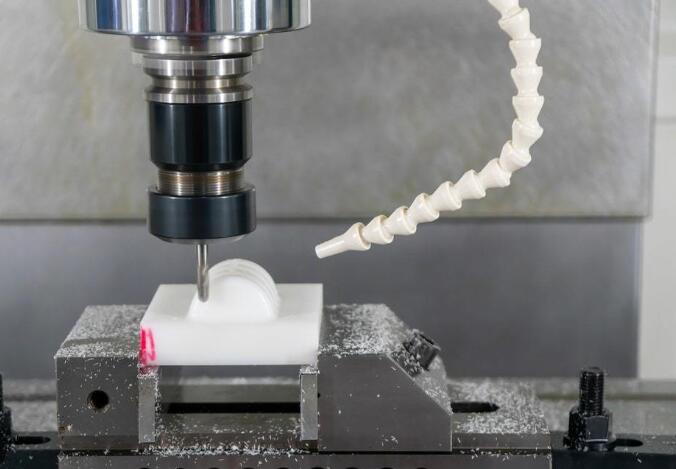
Computer Numerical Control (CNC) machining is a subtractive plastic fabrication process where material is removed from a workpiece to achieve the desired shape. In plastic CNC machining, the workpiece is typically a solid block of plastic, and the shape of the final product is defined by a digital model.
Here’s a brief overview of the plastic CNC machining process:
Digital Model Design: The process begins with the design of a 3D digital model of the final product. This model is then converted into a series of instructions for the CNC machine, using a process called Computer-Aided Manufacturing (CAM).
Setup: The raw plastic material is secured on the machine’s worktable using clamps or vices. The CNC machine is then set up with the correct tools and settings for the job.
Machining: The CNC machine follows the instructions to move its tools around the workpiece, accurately cutting and shaping the plastic to match the digital model. This process can involve various techniques, such as milling, turning, or drilling, depending on the product’s requirements.
Finishing: Once machining is complete, the product may undergo additional finishing processes, such as sanding or polishing, to improve its appearance or performance.
Fused Deposition Modeling (FDM)
Fused Deposition Modeling (FDM) is a popular 3D printing technique that creates parts layer by layer from a plastic filament.
It starts with a plastic filament fed into a heated nozzle, which then extrudes the melted plastic onto a build platform following a computer-guided path.
Advantages: FDM is known for its ease of use, speed, and affordability. It is capable of producing complex shapes and geometries.
Applications: FDM is commonly used for prototyping, concept models, and manufacturing aids due to its flexibility and low cost.
Sure, I understand your instructions. I’ll provide the definition, working process, advantages, and applications of each process with simpler terms.
Stereolithography (SLA)
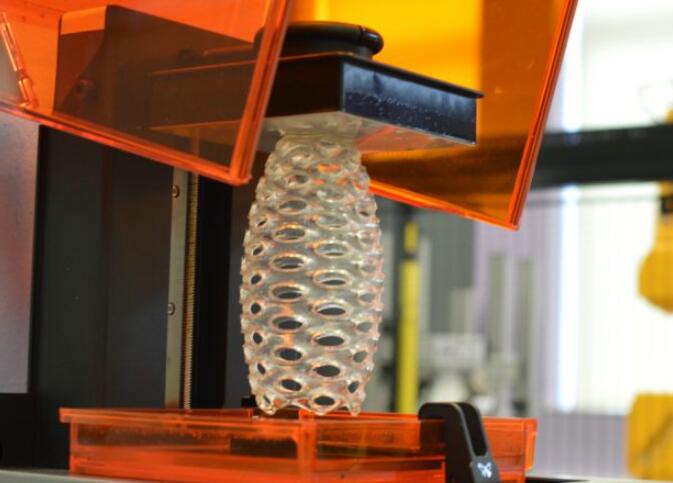
Definition: Stereolithography (SLA) is a 3D printing process that uses a laser to harden liquid resin, layer by layer.
Working Process: SLA starts with a vat of liquid resin. A computer-guided laser traces a pattern onto the surface, hardening the resin to form a layer of the object. This process repeats until the object is complete.
Advantages: SLA produces highly detailed parts with smooth finishes and is capable of producing complex geometries that can be challenging with other fabrication processes.
Applications: SLA is primarily used for prototypes, models, and production parts requiring high detail and surface finish.
Plastic Extrusion
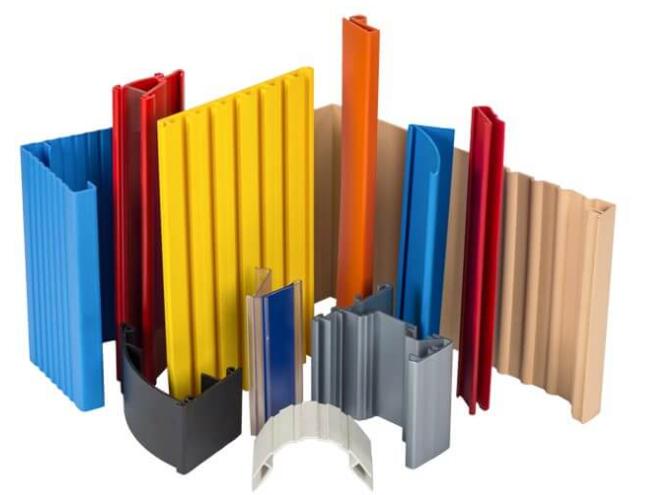
Definition: Plastic extrusion is a high-volume manufacturing process in which raw plastic material, usually in the form of pellets, is melted and formed into a continuous profile.
Working Process: The process starts with feeding plastic material pellets into an extruder, which are then heated to their melting point. This melted plastic is forced through a die, shaping it into a continuous profile with the desired cross-section. The extruded plastic is then cooled and cut to length.
Advantages: Plastic extrusion is highly efficient for mass production. It’s capable of creating complex cross-sectional profiles that would be difficult to produce using other methods.
Applications: Plastic extrusion is often used to create various products such as pipes, tubing, window frames, weather stripping, and adhesive tape.
Plastic Pultrusion
Definition: Pultrusion is a continuous process for manufacturing composites with uniform cross-sections. The process involves pulling fibres through a resin bath and into a heated die where the resin undergoes polymerization.
Working Process: Pultrusion begins with bundles of fiber (roving) being pulled off racks and guided through a resin bath or impregnation system. The wet-out fiber is then formed and pulled through a heated die. Inside the die, the resin cures and solidifies, providing the shape of the desired profile
Advantages: Pultrusion is highly efficient and allows for consistent quality. It also allows for the production of parts with high fiber volume fractions, resulting in superior strength and stiffness compared to other fabrication methods.
Applications: Plastic pultrusion is used extensively in the construction, transportation, and infrastructure sectors to produce products like grating systems, handrails, beams, and structural shapes.
Plastic Welding
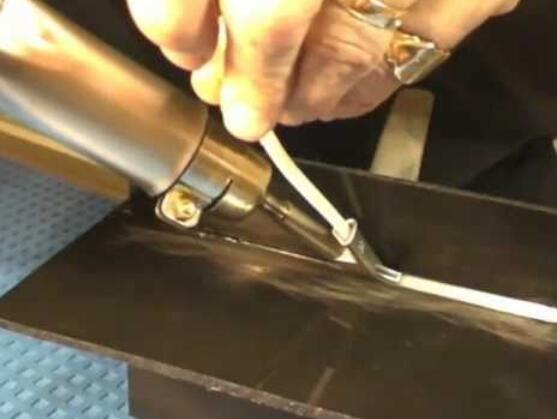
Definition: Plastic welding is a process of creating a molecular bond between two compatible plastics. This process is often used when fabricating and repairing plastic parts.
Working Process: Plastic welding involves using heat to melt the parts to be joined. Then, the melted surfaces are pressed together and allowed to cool, creating a strong bond. There are several techniques for plastic welding, including hot gas welding, ultrasonic welding, and laser welding, each with their own advantages.
Advantages: Plastic welding is an effective way to join plastic materials without using adhesives or mechanical fasteners. It results in a bond that is as strong as the original material and can withstand similar environmental conditions.
Applications: Plastic welding is used extensively in industries such as automotive, construction, and consumer goods for joining plastic components. Common applications include water tanks, automotive parts, plastic pipes, and consumer product containers.
Thermoforming
Definition: Thermoforming is a plastic molding technique that involves heating a plastic sheet to a pliable forming temperature, forming it to a specific shape in a mold, and trimming it to create a usable product.
Working Process: In the Thermoforming process, a plastic sheet is heated to a flexible forming temperature. Then, it is formed to a specific shape using a mold. This can be achieved by using vacuum, pressure, or mechanically assisted methods. Once the plastic has cooled and solidified, it is trimmed to shape and excess material is removed.
Advantages: Thermoforming is cost-effective, especially for large parts. It offers a high level of detail and finish, and tooling modifications are relatively easy and inexpensive.
Applications: Thermoforming is used in a wide range of industries such as packaging, automotive, and consumer products. Common products include packaging trays, blister packs, vehicle door and dash panels, refrigerator liners, and utility vehicle beds.
Plastic Stamping
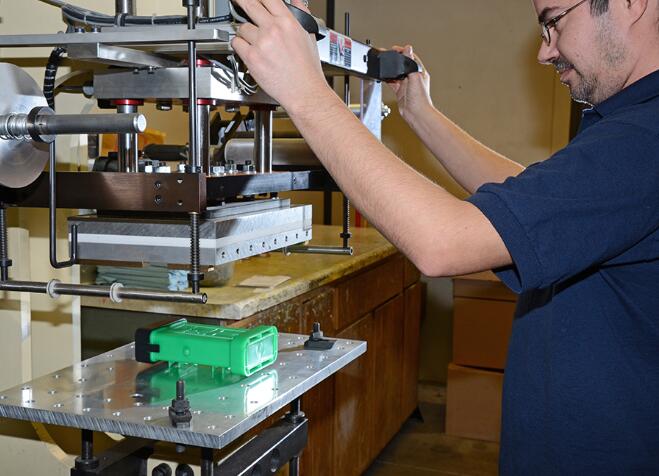
Definition: Plastic stamping, also known as press forming, is a process used to cut or shape plastic using a press.
Working Process: This process involves placing a flat plastic sheet on a stamp or mold which is then placed into a stamping press. The press applies high pressure and the plastic sheet is shaped according to the mold.
Advantages: Plastic stamping is highly efficient and cost-effective for high-volume production. It can produce parts with high precision and requires less finishing work, reducing overall production time.
Applications: Plastic stamping is commonly used in industries such as electronics, automotive, and appliances. It’s ideal for making small parts like washers, gaskets, and seals.
Plastic 3D Printing
Definition: Plastic 3D Printing, often known as additive manufacturing, is a process that creates three-dimensional objects from a digital file. It builds parts layer by layer, using various materials, primarily plastic.
Working Process: This process starts with a 3D model, which is sliced into layers by software. The printer then deposits or solidifies material layer by layer following the digital blueprint, until the part is fully constructed.
Advantages: Plastic 3D printing allows for high complexity and customization, making it ideal for prototypes, one-off items, and complex geometries that are impossible with traditional manufacturing processes. It can also shorten the product development cycle due to its rapid prototyping capabilities.
Applications: Plastic 3D Printing is used across a wide range of industries, including aerospace, medical, automotive, and consumer products. Common applications include rapid prototyping, custom tools, end-use parts, and architectural scale models.
Compression Molding
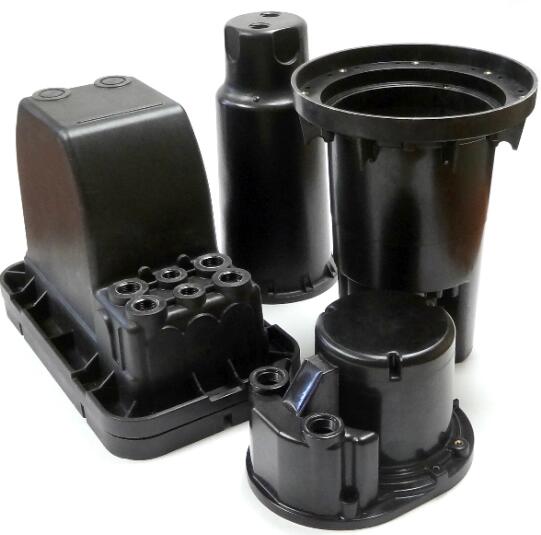
Definition: Compression molding is a method of molding in which the molding material, generally preheated, is first placed in an open, heated mold cavity.
Working Process: The process starts with a plastic compound being placed into the open cavity of a heated mold. The mold is then closed, applying heat and pressure, causing the plastic to flow and fill the mold. Once the plastic has cooled and solidified, the mold is opened and the finished part is ejected.
Advantages: Compression molding is a cost-effective technique for low volume production, and it’s capable of producing large, fairly intricate parts. It also has low waste as the material is precisely pre-measured.
Applications: It’s widely used for producing high-strength components such as car parts, housings for electrical appliances and equipment, and particularly in the case of thermoset materials, for producing large parts like automotive hoods and other car body parts.
Reaction Injection Molding (RIM)
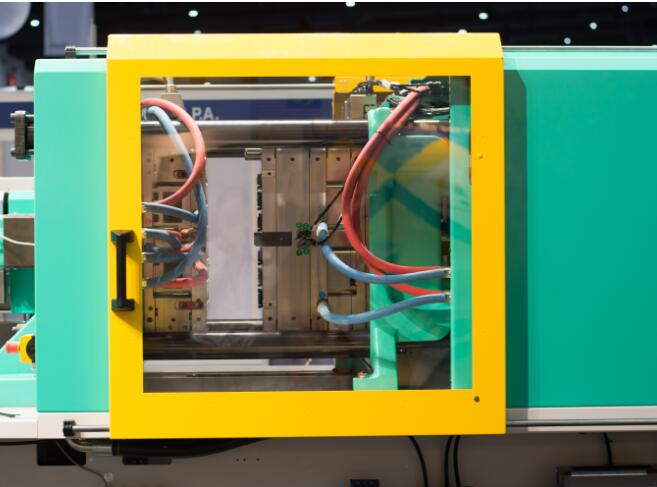
Definition: Reaction Injection Molding (RIM) is a process in which two liquid components are mixed and injected into the mold where they chemically react and cure.
Working Process: In RIM, two liquid components—a polyol and an isocyanate—are kept separate until they are injected into a mold where they mix and react. The resulting polymerization process creates the part within the mold. The part is then ejected from the mold once it has sufficiently cooled.
Advantages: RIM is useful for creating large, lightweight parts with excellent structural integrity. The process is fast, allowing for the production of complex designs in a short period of time.
Applications: RIM is extensively used in automotive parts and panels, and also in the production of large, complex parts such as enclosures for scientific and medical equipment.
Lamination
Definition: Lamination is a process of fusing multiple layers of materials together to improve strength, stability, appearance, or other properties.
Working Process: In the lamination process, layers of plastic materials are fused together using heat, pressure, and an adhesive. The materials are placed between two heated plates, which apply pressure and induce the melting of the adhesive, bonding the layers together.
Advantages: Lamination can increase the strength and rigidity of plastic parts. It’s also a great way to protect surfaces against weather, stains, and other environmental factors.
Applications: Lamination is widely used in various industries, from packaging to automotive. In packaging, it’s often used to create a protective layer for products. In automotive, it’s used for components like safety glass where multiple layers of plastic are laminated together for improved impact resistance.
Foam Molding
Definition: Foam molding is a plastic fabrication process that produces parts with a cellular or foamed structure. It involves the use of gas or a blowing agent to create a foam-like structure within the plastic.
Working Process: In foam molding, plastic pellets are heated until they melt, and a gas or blowing agent is introduced. As the plastic cools, it begins to solidify around the bubbles of gas, resulting in a foamed structure with a solid skin around the outside. The most common methods of foam molding are structural foam molding and expanded foam molding.
Advantages: Foam molding allows for the production of lightweight parts with improved thermal insulation and sound absorption. The process also results in high strength-to-weight ratios and low material usage.
Applications: Foam molding is used extensively in industries such as packaging, automotive, construction, and furniture. Typical applications include protective packaging, insulation panels, seat cushions, and dashboard components.
Composite Fabrication
Definition: Composite fabrication is a process that combines two or more materials with different physical and chemical properties to produce a material with characteristics different from the constituent materials.
Working Process: This process often involves placing a reinforcing material, like fibers or particles, into a mold, and then filling the mold with a matrix material, such as plastic resin. The matrix material binds together the reinforcement material, which is then cured to create a strong, lightweight composite part.
Advantages: Composite fabrication produces parts that are lightweight, yet stronger than steel, and resistant to heat, chemicals, and corrosion. This makes them ideal for a wide range of applications in various industries.
Applications: Composite fabrication is commonly used in aerospace, automotive, construction, and sporting goods industries. Typical applications include airplane components, car bodies, bridges, and golf clubs.
Hydroforming
Definition: Hydroforming is a type of die forming used to shape metals and, in some cases, plastics. The process uses fluid pressure in place of a punch in a conventional die set to form the part.
Working Process: In hydroforming, a tube or a sheet of plastic is placed in a die. High-pressure fluid, typically water, is then pumped into the tube or against the sheet. The plastic expands until it conforms to the shape of the die. Once the part has cooled and hardened, the fluid is released.
Advantages: Hydroforming allows for complex shapes with smooth surfaces to be created without the need for multiple operations or welds. It’s also capable of producing structurally strong components with minimal material wastage.
Applications: While hydroforming is traditionally used with metals, it is increasingly being used with plastics, especially in the automotive industry for components such as plastic fuel tanks and other complex hollow plastic parts.
Film Insert Molding
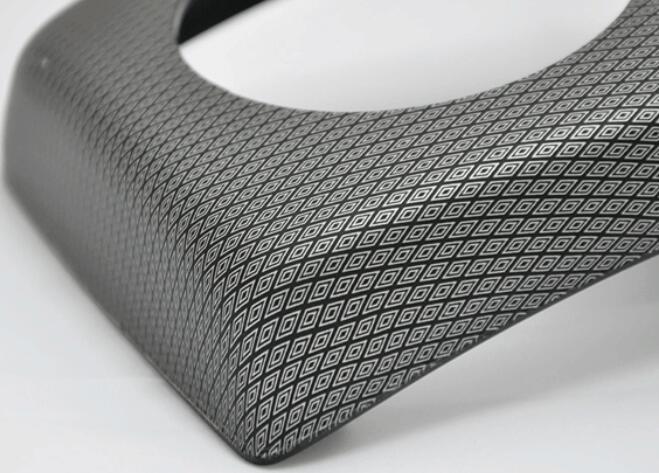
Definition: Film Insert Molding (FIM) is a process where a preformed film is inserted into a mold to act as the surface layer for the plastic part being produced.
Working Process: In the FIM process, a decorative or functional film is first formed to the shape of the final part. The film is then placed into a mold, and molten plastic is injected behind it, bonding with the film during cooling and solidification.
Advantages: This method allows for the production of complex, multi-material components in a single step, with excellent bonding between the film and the plastic. It also opens up a wide range of decorative possibilities, including color, texture, and even integrated graphics.
Applications: FIM is frequently used in the automotive industry for interior parts such as dashboards and control panels. It’s also commonly used in the production of mobile phone housings, remote controls, and other consumer electronics.
Rotational Foam Molding
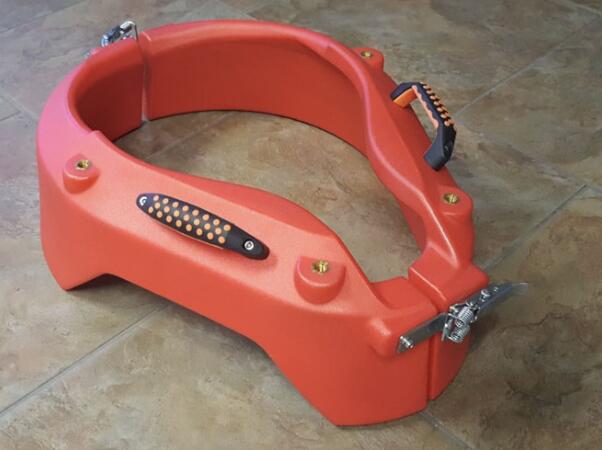
Definition: Rotational Foam Molding, also known as rotational casting or roto molding, is a process used to produce hollow plastic parts with a foamed structure.
Working Process: In this process, a predetermined amount of plastic powder and a blowing agent are placed inside a closed mold. The mold is then rotated in two perpendicular axes and heated. The plastic melts and coats the inside of the mold while the blowing agent creates the foam structure. Once cooled, the finished part is removed from the mold.
Advantages: Rotational Foam Molding can create large, lightweight, and durable parts with uniform wall thickness, complex shapes, and excellent surface finish. The process also minimizes waste as excess material can be reused.
Applications: This process is commonly used to manufacture large hollow items such as tanks, playground equipment, automotive parts, and outdoor furniture.
Choosing the Right Plastic Fabrication Process
When it comes to selecting the appropriate plastic fabrication process for your project, there are several factors to consider. Not every method is suited to every application, and it’s essential to understand the unique characteristics, advantages, and limitations of each process. Here are a few factors to take into account:
Design Complexity: If your part design is complex or requires high precision, processes like CNC machining, injection molding, or 3D printing may be preferable. For simpler designs or hollow parts, rotational molding or blow molding could be more suitable.
Production Volume: For large production runs, injection molding or extrusion might be the most cost-effective due to their high-speed production rates. For lower volumes, CNC machining or 3D printing could offer more flexibility and lower initial costs.
Material Considerations: The choice of plastic material can also influence the fabrication process. For example, thermosetting polymers are suitable for compression molding, while thermoplastics are more suited to injection molding or extrusion.
Physical Properties: If your part needs to have specific physical properties, such as high strength, flexibility, or resistance to heat or chemicals, this will also affect your choice of fabrication process.
Budget and Time Constraints: Some processes require significant upfront investment in tooling but have lower per-unit costs, making them more suitable for large production runs. Others have lower setup costs and faster turnaround times but higher per-unit costs, making them ideal for prototyping or small production runs.
Conclusion
In the world of plastic fabrication, there are numerous processes available to bring your ideas to life. From injection molding and CNC machining to 3D printing and thermoforming, each process has its own strengths and applications. By understanding the working principles, advantages, and limitations of these processes, you can make an informed decision about which one is most suitable for your project.
By partnering with a trusted plastic fabrication company like Worthy Hardware, you can leverage their expertise and experience in selecting and executing the most appropriate fabrication method for your needs. They can guide you through the process, from design to production, ensuring the highest quality and efficiency.
Don’t hesitate to reach out to Worthy Hardware or other trusted plastic fabrication companies to discuss your project requirements, receive personalized service, and bring your plastic fabrication ideas to fruition.

